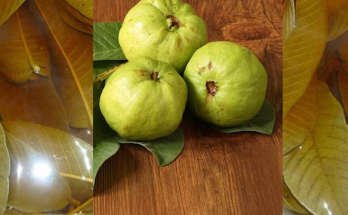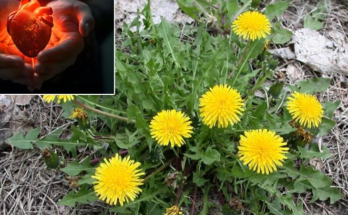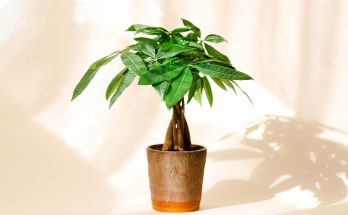If you garden long enough, you’ll eventually experience the joy of waging war against a plant you just had to have, only to find out later that it was bent on total world domination.
Who knows, maybe you’re still trying to eradicate it from your garden to this day.
In an effort to help others avoid this fate, I’ve collected a few of the most common plants that folks end up regretting. Hopefully, this list will help you avoid a serious case of gardener’s remorse in the future.
And should you find a plant on this list that you absolutely must grow, I’ll even give you a few tips on how to keep them contained.
1. Mint (and all its varieties)

Ask anyone who has planted mint in their garden about their experience, and you’ll likely be met with a grimace of pain.
Mint is notorious for spreading like wildfire once established. That’s because it spreads through rhizomes that grow under the soil, as well as runners that spread above ground. These rope-like extensions can be tough to pull up, and if you don’t get all of it, then the plant will pop back up again.

I made the mistake of planting mint in my herb garden because I like the occasional mint julep or a mojito in the summer. I’ll tell you what. If I used all of the mint that’s growing in my garden right now for cocktails, I’d be dead from liver failure by the end of the day.
But don’t let that stop you from planting mint.
It’s a wonderful herb to have on hand, both fresh and dried. However, the wise gardener will plant it in a pot.
If you want the look of mint growing in your garden, you can even bury the pot in the ground. However, you should leave about half of the pot above ground, and you’ll need to be diligent about snipping off any runners that decide to jump over the edge in a bid for freedom and open soil.

2. Morning Glory

With beautiful heart-shaped leaves and vibrant trumpet flowers, it’s hard not to love morning glories. They’re charming and cheerful. Of course you would want to plant them in your garden.
However, once you do, you’ll likely be battling masses of dense foliage that will creep and cover anything in its path. Morning Glory will root anywhere there is a node along the stem and send more runners into the ground.
Eradicating morning glory once it gets ahold takes considerable energy and time, sometimes spanning years.
The seeds can lie dormant in the ground for decades! Just ask anyone dealing with its not-so-distant cousin, bindweed.

An easy way to head this nightmare off at the pass is to plant it in window boxes or pots and keep it contained to your patio or balcony. Deadhead spent blooms to prevent the seeds from spreading.
3. Sunchokes or Jerusalem Artichokes

Sunchokes or Jerusalem artichokes are a tough one. Yes, they can spread and grow out of control. In fact, the only reason they aren’t considered invasive is because they’re native to North America.
However, this delicious and nutrient-packed plant deserves a spot in your garden.

If you want to tame sunchokes, then grow them in their own dedicated raised bed and cut the flowers before they have a chance to go to seed.
4. Chinese Wisteria
Apparently, we have this penchant for bringing plants from Asia to the Americas for our gardens. Then we’re suddenly surprised to find that they take over because of a lack of natural competitors when they escape from our backyards.

A classic case is the beautiful Chinese wisteria, with its long grape-like flower clusters.
This stuff is now considered an invasive species in 19 states.
This is one plant that’s a solid “don’t,” there is no mitigating it.
If you want the beauty of a wisteria-covered pergola, opt, instead, for the native Wisteria frutescens.
5. Trumpet Vine

You can usually tell right away if a plant has a tendency to take over by some of its more common nicknames. For instance, trumpet vine (Campsis radicans) is also known as Hell Vine as well as Devil’s Shoelace. (I thought he was cloven? Can the devil even wear shoes?)

This is another vine that spreads easily both above ground through seeds and below ground through rhizomatic runners. While it is beautiful, it’s also hard to contain. If you do decide to plant it, be ready to spend some time maintaining its boundaries each year.
6. Fish Mint

Fish mint goes by many names: heart leaf, chameleon plant, lizard tail, or fish wort. Despite the plant being edible, the very name fish mint kinda makes me not want to plant it. Apparently, it’s one of those plants you either love or despise the taste of. Despite its common moniker, fish mint isn’t actually a member of the mint family.

It’s native to Southeast Asia, where it’s used both as a culinary and medicinal plant.
However, like the other plants on this list, it tends to get out of hand quickly. This is another plant that’s best grown in a container or not at all.
7. Ditch Lily or Tiger Daylilies

Daylilies are beautiful perennials that add a pop of color and waterfall-like foliage to your landscape. If you’re into eating wild plants, daylilies are a great addition to your garden, as all parts of the plant are edible (and quite tasty). (Not to be confused with Star lilies or Asiatic lilies, which are poisonous.)
However, the orange variety, known as ditch lilies, is invasive. Some areas prohibit their planting.
These are best left unplanted altogether as they spread rapidly, outcompeting native plants.
8. English Ivy

English ivy is beautiful, with its deep green glossy leaves and silvery lines tracing the veins. However, it’s also incredibly aggressive, easily and quickly growing beyond where you want it to and covering everything in its path.
I had to laugh. I was reading information on dealing with Creeping Charlie on one of the land grant school’s extension websites. They suggested planting English ivy instead of Creeping Charlie. Ah, yes, let’s swap out one aggressive invasive species for another.
If you want to enjoy this truly beautiful plant, it’s best to grow it in a pot as a houseplant. (Of course, that’s the surest way to kill any tough, invasive plant – bring it into a house and try to keep it alive.)
9. Bamboo

If you don’t like your neighbor and want to make their life miserable, plant bamboo in your yard. (I’m kidding. Please, don’t.)
Just don’t plant bamboo at all. Trust me.
I shake my head every time I pass a stand of bamboo in someone’s yard. Once you plant it, that’s it, you’re done. It will keep spreading, year after year, smothering native plants.

Bamboo is an allelopathic plant. It produces its own natural herbicides that kill off other plants around it, giving it headway to take over.
If you must plant bamboo, choose a clumping variety rather than a running variety, as it’s slower to spread. However, this is one plant where there really is no mitigating it and eradicating it is time-consuming and expensive. It’s best to skip it altogether and opt for something else.
In the end…
You’ve likely noticed that my suggestion for most of these plants is to grow them in a container. However, plants have a knack for spreading regardless of our careful plans. After all, it’s what they’re genetically designed to do – ensure they keep growing generation after generation.
The easiest option is not to plant them at all.
If you like the look of them, or have a specific design element in mind, you can contact your local extension office or visit a local nursery for native plants or alternatives.




Fantastic beat I would like to apprentice while you amend your web site how could i subscribe for a blog site The account helped me a acceptable deal I had been a little bit acquainted of this your broadcast offered bright clear concept
Thank you so much